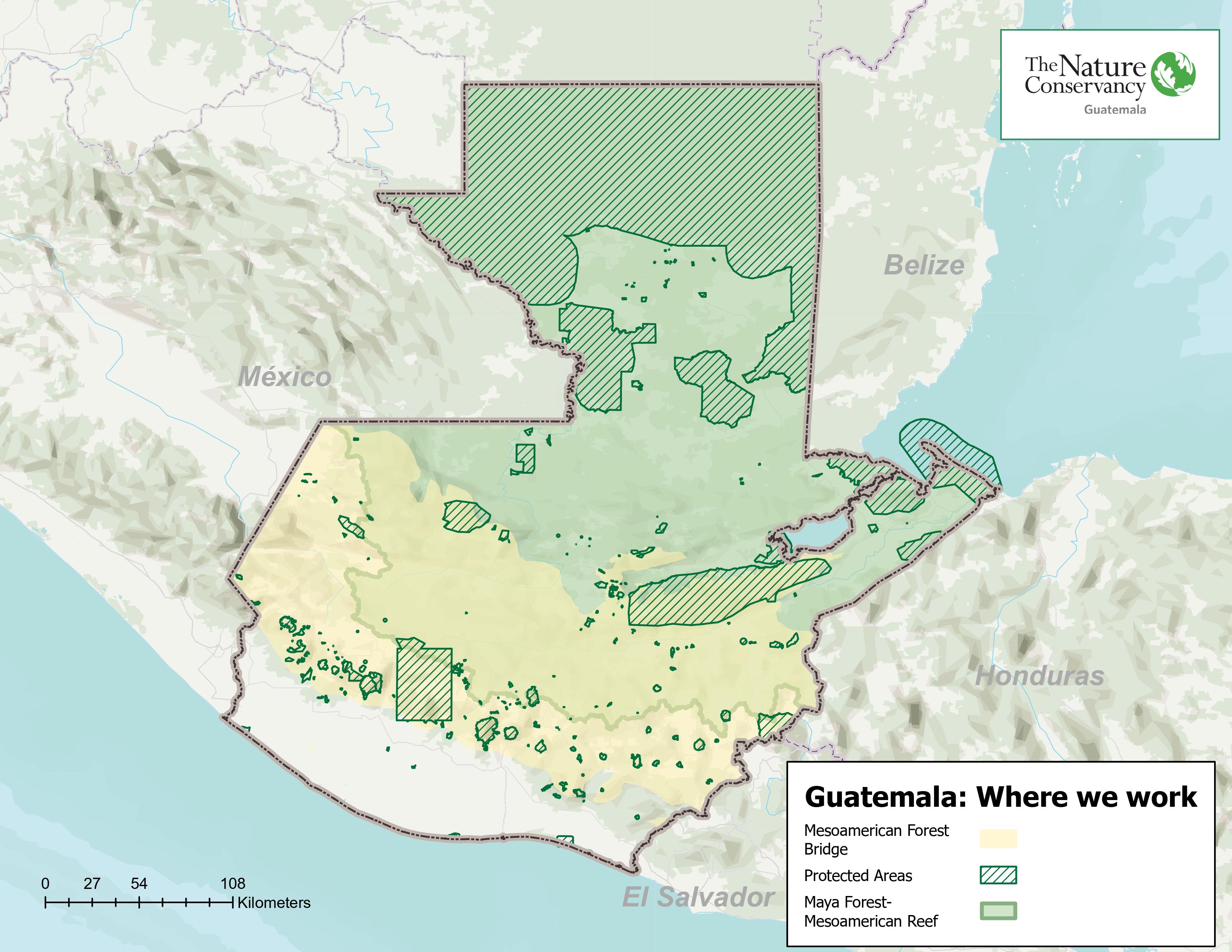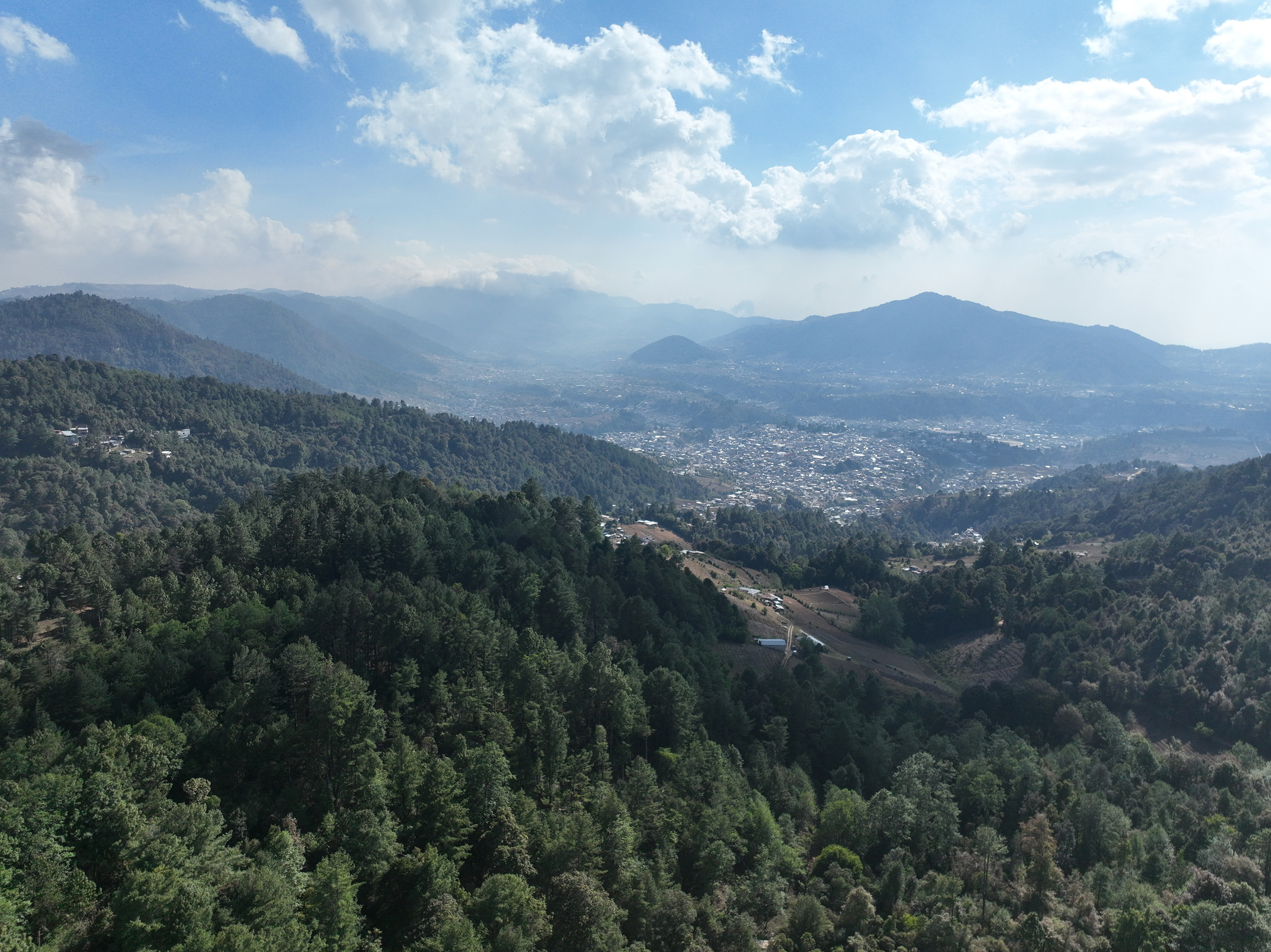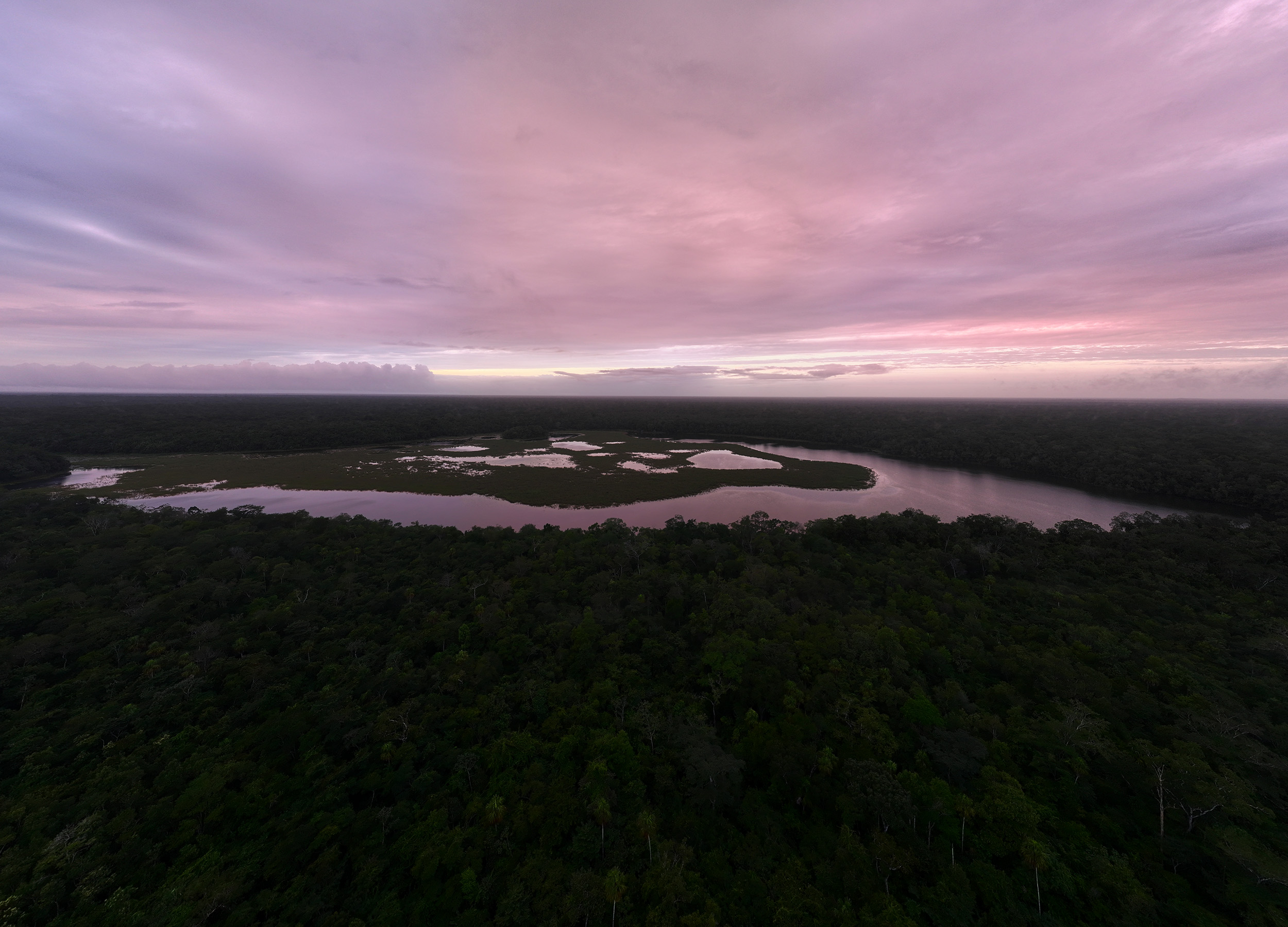Our Iconic Places
Where do we work?

Learn about the beautiful places where TNC Guatemala, organizations, and local authorities work to protect and conserve nature, focusing on comprehensive solutions.

Discover the regions where we work
Guatemala is a small country territory-wise, with diverse and relevant regional ecosystems. Based on the country’s biological, economic, and socio-cultural characteristics, The Nature Conservancy has identified two priority areas in Guatemala, known as Iconic Places: the Maya Forest-Mesoamerican Reef and the Mesoamerican Forest Corridor. These Iconic Places are part of a series of 12 Iconic Places identified throughout Latin America.

Mesoamerican Forest Corridor
That territory covers a group of critical ecosystems located in five countries in the region: Southeastern Mexico, Guatemala’s mountainous and volcanic area, the west of El Salvador, and much of Honduras and Nicaragua. It houses Mesoamerica's pine water and dry forests and plays a vital role in the evolution process connecting South American forests to North American ones.
The Forest Corridor is a temporary home for many migratory species, which increases its relevance to conservation and the connectivity of biological diversity. Additionally, it is vital to provide essential environmental services for human well-being and maintain economic activities in the region. Guatemala’s megadiversity also includes its people and its beautiful cultural heritage. This particular area is home to 22 ethnic groups of Mayan origin, including the K'iche', Q'eqchi', Kaqchikel and Mam. Each of them contributes to the diversity with different artistic, religious, culinary, linguistic and territorial management manifestations. These communities have strong roots in their territory, including examples of community management of forests and the protection of water sources, as well as the cultural values associated with them. The presence and rootedness of these communities is a great opportunity to collaborate and achieve important results in the conservation of ecosystems.

Maya Forest-Mesoamerican Reef
The Maya Forest is within one of Mesoamerica's most extensive forest blocks and the second-largest tropical forest on the American continent. It extends from Mexico’s Yucatán Peninsula, Belize, and the north of Guatemala. That landscape includes the Maya Biosphere Reserve’s (MBR) 8,108 square miles, the largest protected area in Guatemala, representing 20 percent of the national territory and over 60 percent of the surface of all the declared protected areas in the country. It houses many endemic, iconic, and threatened species, among them the five great American cats: margay, jaguar, puma, jaguarundi, and ocelot. It is also the habitat of the tapir and many bird species, such as the scarlet macaw, the orange-breasted falcon, and the black-and-chestnut eagle.
Forest management in communal forest concessions in the MBR has become a global example of sustainable forest management, providing vital benefits to local communities. However, the forest-cover dynamic has been quite different in some protected areas, especially in the southern region of Petén state, where industrial monoculture (mainly corn and palm oil), extensive livestock farming, illegal logging, and forest fires have destroyed the original forest landscape.